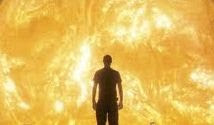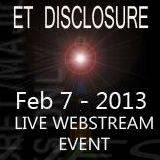http://arstechnica.com/science/news/2010/06/dreaming-big-planning-a-human-mission-to-outer-solar-system.ars
Be Well.
David
Dreaming big: planning a human mission to outer solar system

The new exercise was carried out at Johns Hopkins University’s Applied Physics Laboratory, the starting point for many unmanned space missions—the study’s lead author, Ralph McNutt, has been a prominent figure in robotic planetary exploration for many years. The plans, published last month in the Johns Hopkins APL Technical Digest, would take us to Jupiter, Saturn, Uranus, Neptune, and Pluto starting around year 2050.
The mission design involves future advanced technologies such as an onboard 100MW nuclear reactor powering magnetoplasmadynamic thrusters, which are basically electric ion propulsion engines on hyper-steroids. Electric propulsion systems, which use electricity generated by solar panels to accelerate ionized molecules to produce thrust, have been successfully used on missions such as Deep Space 1, Dawn and Hayabusa. The proposed dream missions would use the electricity generated by a nuclear reactor to shoot a stream of plasma to power us to the distant planets.
The need for an extreme propulsion system arises because the astronauts would be exposed to high doses of galactic cosmic radiation, so the mission durations must be kept relatively short. Even on the International Space Station, which orbits within the protection of Earth’s magnetic field, astronauts are exposed to radiation at twice the limit for US airline pilots.
Image credit: Johns Hopkins University
Their travel plan to Neptune, for example, was designed with a 5-year total mission duration to limit the radiation exposure. That would take us to Neptune in less than two years, which means going significantly faster than anything we have ever launched. For example, the New Horizons probe currently en route to Pluto—the fastest man-made object in space—has reached the distance of 16.74 AUs from the sun as of this writing. That took about 4.5 years, and it's only a little more than halfway to Neptune’s orbit at 30 AU.
To design the mission, the scientists also gave considerations to the size of the living space in which the astronauts would spend 5 years of their lives. They have compared the sizes of past large space habitats such as the Skylab, the Russian Mir, and the International Space Station to determine that approximately 200 cubic meters per person of habitable volume makes for a healthy living space. If the habitable space is spherical, a crew of 10 would need a 7.8 meter radius, or about twice the size of Discovery 1 in 2001: A Space Odyssey.
Not surprisingly, this dream voyage is not cheap. Based on the costs of historic large technological endeavors, the scientists project that a mission to Neptune would cost roughly 4 trillion dollars. To put this number in perspective, in 2009, the GDP of the US was about 14 trillion dollars, and the US federal budget was about 3.1 trillion dollars, of which NASA received only $17.6 billion. Due to the extreme financial cost associated with the plan, the authors conclude that, for the mission to materialize at all, it would have to be a large-scale international collaborative effort.
It is worth noting that the study is a technical dream exercise to show how it could be done. But it is exciting to think that such an exploration plan is no longer a pure fantasy, and it can now be considered in enough detail that we can identify what specific technologies must still be developed.Ralph L. McNutt et al. (2010) “Human Missions Throughout the Outer Solar System: Requirements and Implementations”





No comments:
Post a Comment